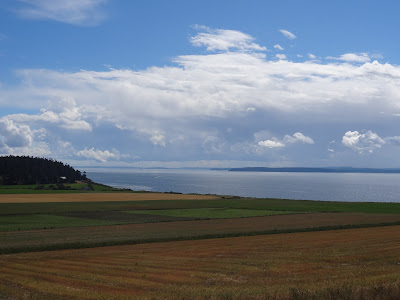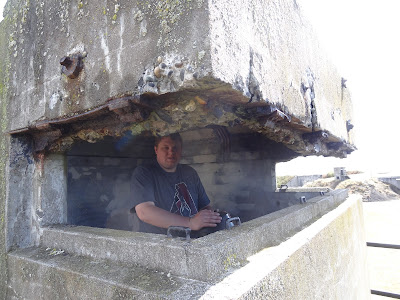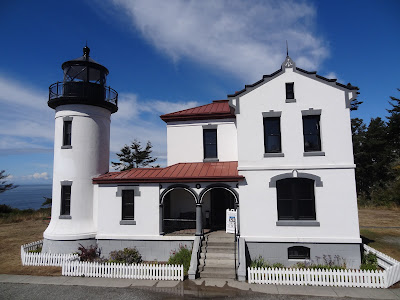Visited: Sept 2016; June 2018
Nearby town: Coupeville, WA
“...almost a paradise of nature.”
-from an 1851 letter written by Isaac Ebey to his brother
Beautiful, windswept Whidbey Island lies just off the coast of Washington, about 40 miles northwest of Seattle, and is the largest island in the state.
Under the Donation Land Law of 1850, any U.S. citizen could get free land in the Oregon Territory (which included present-day Washington), as long as they homesteaded the land for four years. Tens and thousands of Americans headed west searching for a new life in the wild frontier. One of those folks was Colonel Isaac Neff Ebey, a farmer born in Ohio who originally headed west to attempt to strike it rich in the California gold fields. While in Seattle, Col. Ebey heard tale of some islands to the northwest, and became the first white settler on Whidbey Island. Ebey wrote to his family, convincing them to join him on the island. Ebey claimed 640 acres overlooking the Admiralty Inlet. The Ebey’s found success farming on the island, growing wheat, potatoes, onions, carrots, cabbages, parsnips, peas, barley, and other grains. Ebey built a dock on the Puget Sound and facilitated trade between the growing island and the Olympic Peninsula.
Another early settler, a New England sea captain named Thomas Coupe, claimed land nearby and established the town of Coupeville, the second oldest town in Washington. The settlement prospered, even though Ebey himself was killed by Indians in 1857, at the age of 39.
In the late 19th century, the US government considered the Admiralty Inlet to be of great strategic importance to the defense of Puget Sound from an enemy invasion. Therefore, Fort Casey was constructed on Whidbey Island in 1897. Fort Casey was an active military installation throughout the Spanish-American War, and both World Wars. In 1955, the Fort was discontinued and ownership transferred to the State of Washington.
In 1978, the NPS established Ebey’s Landing National Historical Reserve to protect and preserve Ft. Casey (and nearby Ft. Ebey) and Ebey’s original land claim. Ebey’s Landing is unique in that it is one of only two units designated as a Reserve (the other being City of Rocks in Idaho). A Reserve is similar to a Preserve, protected land but limited extraction of materials and resources are permitted. The difference being that a Reserve may be managed by state or local governments. Indeed, most of the land in the unit is still privately owned, and the area is still a working community. However, visitors can go see both forts, a beach along the Admiralty Inlet, and the surviving structures of Ebey’s farm (the Jacob and Sarah Ebey House and the blockhouse). You can learn about life on the frontier here and tour the home. The farmlands were pristine and beautiful.
The highlight of the Park is Ft. Casey. There’s lots of cool batteries along the coast, some impressive and massive cannons, and the charming and scenic Admiralty Head Lighthouse.
Although not part of the Reserve, it’s worth the short 20-minute drive to Deception Pass on the northern tip of Whidbey Island. The strait separates Whidbey Island from Fidalgo Island. The beaches here are rocky and precipitous. And the two islands are connected by the fabulous (and kind of scary) Deception Pass Bridge.
Tara’s aunt lives on Whidbey Island, so we have been fortunate enough to visit this corner of the country a couple of times. For more info: https://www.nps.gov/ebla/index.htm


















































No comments:
Post a Comment